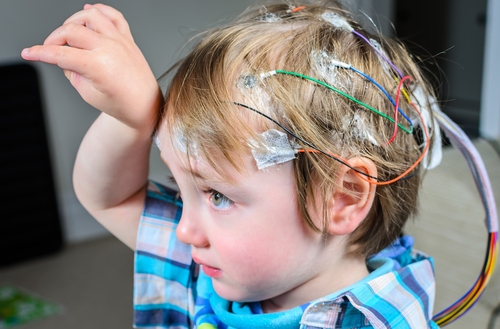Sleep hypopnea is a prevalent sleep disorder that affects many individuals throughout the world. It occurs when a person's respiration is interrupted during sleep, leading to poor slumber standards and various medical concerns. One of the ways researchers and physicians are working to better comprehend and diagnose sleep apnea is through a technique called quantitative electroencephalography, or qEEG. This method measures the electronic activity of the cerebrum and can provide valuable understandings into how sleep apnea affects cerebral function and general well-being.

qEEG involves positioning small electrodes on the scalp to capture brain waves. These brain oscillations are then examined to detect patterns that may indicate sleep disorders, including sleep apnea. By examining these trends, medical professionals can gain a clearer picture of how sleep apnea disrupts normal cerebral function during slumber. This data can be crucial for developing effective treatment plans customized to individual clients. Understanding the connection between qEEG and sleep apnea can lead to improved identification techniques and superior results for those impacted by this disorder.
Research has shown that people with sleep apnea often exhibit distinct changes in their brain wave trends. For instance, during instances of apnea, the cerebrum may exhibit heightened function in specific regions while additional regions become more engaged. These alterations can affect how well a individual slumbers and how rested they feel upon waking. By using qEEG to monitor these cerebral oscillation patterns, doctors can identify specific characteristics of sleep apnea in patients, which can help in making a more accurate diagnosis. This is particularly important because sleep apnea can sometimes be mistaken for other sleep conditions, leading to inappropriate treatments.
In furthermore to improving identification, qEEG can also serve a part in assessing the efficacy of therapies for sleep apnea. For example, after a client starts employing a constant beneficial airway force (CPAP) device, which assists maintain the passage clear during slumber, qEEG can be utilized to evaluate alterations in cerebral function. If the brain exhibits improved patterns of sleep after initiating treatment, it may indicate that the therapy is working effectively. This feedback can assist physicians formulate required modifications to treatment plans, ensuring that clients obtain the optimal care possible.
Overall, the connection between qEEG and sleep apnea patterns is an exciting area of research that holds potential for improving diagnosis and therapy. By comprehending how sleep apnea impacts cerebral informative post function, healthcare providers can develop more effective approaches to assist clients attain better sleep and improve their overall health. As studies continues to evolve, it is likely that qEEG will become an essential instrument in the battle against sleep apnea, resulting to better outcomes for those who experience from this challenging disorder.
Comments on “Unveiling the Connection Among quantitative EEG and Sleep Disorder Patterns for Improved Assessment and Therapy”